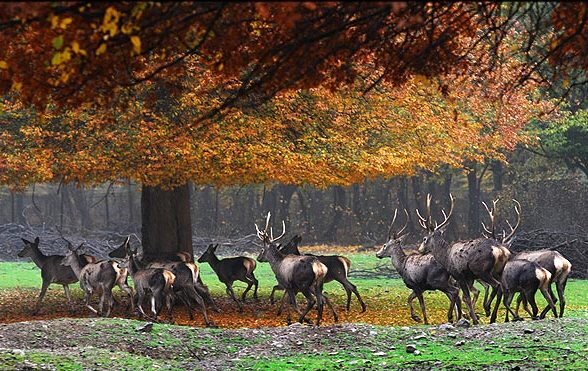Electronic protection comes to Golestan National Park

TEHRAN – Golestan, the oldest national park in Iran, is struggling with environmental issues such as wildfire, so the Department of Environment (DOE) with the help of the Ministry of Communications, is trying to promote electronic protection through technological advances.
The national park is a unique refuge for wildlife that has been facing problems in recent years due to man-made damages.
Stretched to 87,402 hectares, it is home to one-seventh of Iran's plant species, one-third of all birds, and half of the country's mammals, hosting 1,350 plant species and 302 wildlife species. It has been listed as one of the top fifty ecosystems on the UNESCO World Heritage List in 1930.
In January 2019, the DOE and the ICT have inked a memorandum of understanding (MOU) to contain natural disasters such as wildfires using modern technologies in Golestan National Park, northern Iran.
As per the MOU, such projects aiming at achieving environmental goals and sustainable development along with early detection and warning of natural disasters using modern technology will be implemented nationwide.
A project will be piloted in Golestan national park in the northern province of Golestan, using technological advances for the early detection of wildfire and floods.
Golestan National Park is facing the danger of wildfires every year, the agreement using Techs, IoT, and satellite imagery will prevent and fight wildfire; which is done by 70 percent.
There is a lack of forces to patrol the protected areas, for example, only 40 rangers protect the entire area of Golestan National Park, which does not correspond to the size of this habitat.
A total budget of 50 billion rials (nearly $1.1 million at an official rate of 42,000 rials) was be allocated in this regard.
Wildlife species living in the area include Persian Leopard, Brown bear, jackal, Persian ibex, wolves, wild cat, Caspian Red deer, wild boar, gazelle, mountain goat, fox, and coyote. And plant species growing in the region consists of several endemic ones such as Alma saffron, Persian Ironwood.
In the past, the Asiatic cheetah also lived in the area of Mirzabaylu plain, but the last cheetah was seen in the area at least 40 years ago. Of course, in October 2014, a cheetah was observed in this plain, but no one could photograph it.
Golestan National Park weather varies from very humid to semi-arid with precipitation of less than 200 to 1000 mm. Temperatures in Golestan National Park vary from -25 degrees to +35 degrees depending on the different months of the year. The highest absolute temperature reported in the park was 42 C in the southeast of the park.
So far, 150 species of birds have been identified in Golestan National Park. Golden Eagle, eastern imperial eagle, saker falcon, falcon, and bearded vulture are among the endangered birds of the park. Other birds of Golestan National Park include common pheasants, shrikes, griffon vulture, rosy starling, typical warblers, wheatears, finches, and common blackbirds.
The park holds a share of 3 species of amphibians and 24 species of reptiles.
FB/MG

Leave a Comment